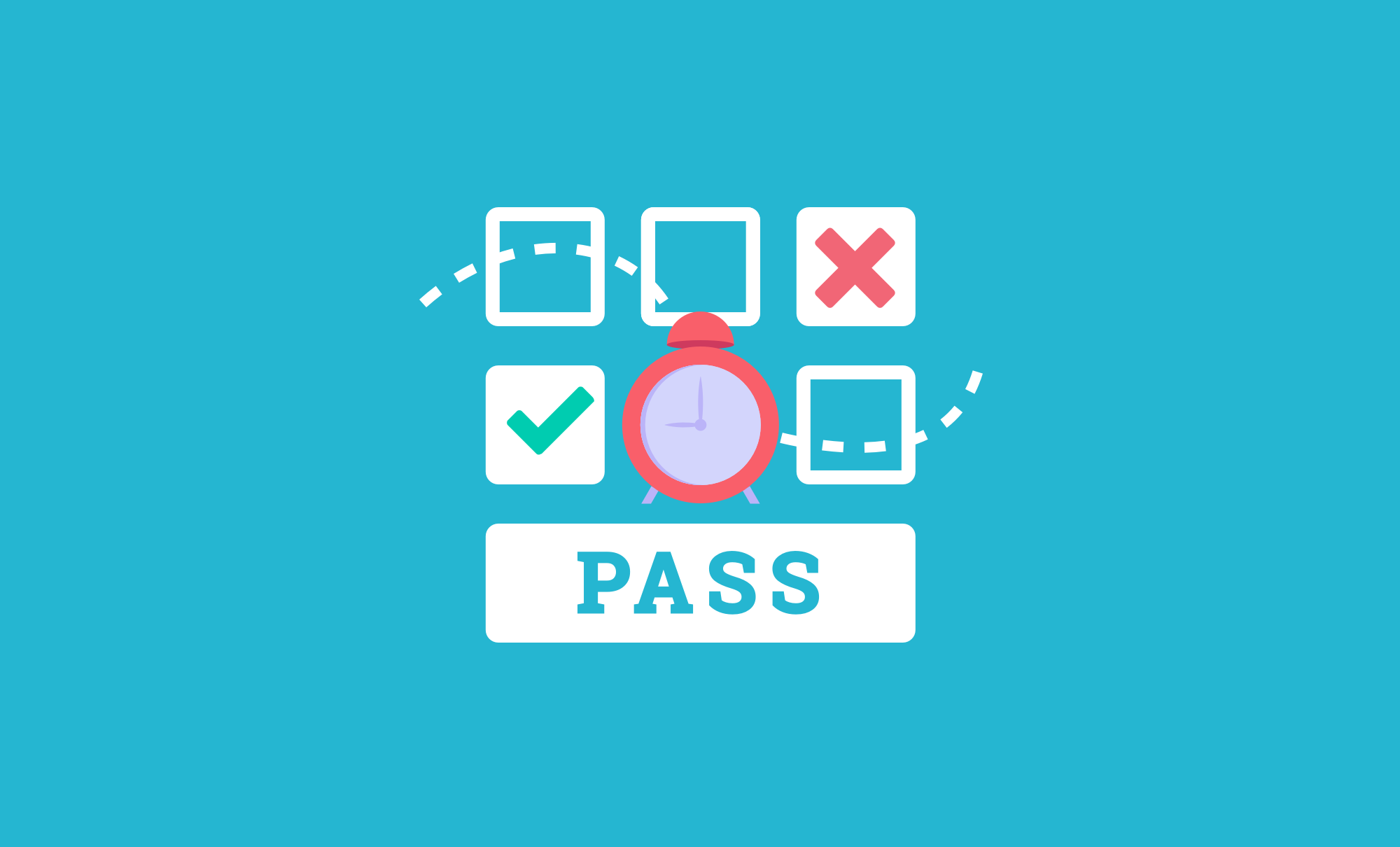We love quizzes for retrieval practice to consolidate learning. Quizzes are also a great option for automarked summative assessment to award badges or signify competence. The automation of both the marking and the awarding of a badge save organisations time and money.

Of course, there is also a whole range of quiz uses in between but it’s the two ends of this spectrum we’re interested in for this post.
For learning, we need to see where we went wrong. For measurement and grades, organisations need to be sure answers can’t be shared. Below we explore this dichotomy in a bit more detail and discuss the challenges in balancing quizzes for learning and quizzes for rigorous assessment.
Assessment and learning
When talking about assessment, you’ll often come across these main types.
Assessment for learning
Assessment for learning is the most common form of formative assessment. In assessing for learning, we’re concerned about gathering information to gain insight into learning progress. The main purpose is so that facilitators and learners can move learning forward, and adapt their strategies if needed.
Assessment as learning
Assessment as learning is another form of formative assessment. But assessment as learning focuses on learners’ metacognition. It's purpose is to gather information to allow learners to monitor and reflect on what and how they’ve learned to identify their next steps.
Assessment of learning
Assessment of learning is also known as summative assessment. In making an assessment of learning, we’re concerned about gathering information to report, award, certify proficiency, or otherwise gather evidence of learners meeting outcomes.
Quizzes for learning
Quizzes for learning are our non-assessed quizzes. They relate to both forms of formative assessment - assessment for learning and assessment as learning. We’ve set up the features for a non-assessed quiz to be focused on using them for retrieval practice and learning.
We commonly see these as revision quizzes before an assessment, or as end of topic quizzes to help learners reinforce and consolidate the topic before moving on. Quizzes used in this way also enable facilitators to undertake some analysis of learners' answers and attempts. They can therefore use this information to intervene or alter their instruction accordingly.
As such, we’ve set up non-assessed quizzes so that, after each attempt, learners will be able to see which questions they got right or wrong.

They will also be able to see any facilitator feedback for manually marked tasks. For non-assessed quizzes, learners also have unlimited attempts. Always. Learners can have all the practice they need and come back again and again.

Quizzes for assessment
Quizzes for assessment are our assessed quizzes. Although assessment, in general, can be a great opportunity for learning, summative assessment is assessment of learning. So this assessment exists or is administered for the purpose of measuring. So we’ve set up the features for an assessed quiz to be focused on using them for measurement, grades and badges.
As such, our assessed quizzes need to be reasonably rigorous. If we were to show learners whether their choices were right or wrong they’d quite possibly be able to deduce or guess the answers for their next attempt.
This makes the measurement somewhat meaningless as it’s no longer necessarily a measure of what they know or can do.
So, for our assessed quizzes, we show a score but we only ever show learners which questions they got right or wrong after they’ve used all their attempts.


Authors can even set up quizzes to never show the correct answers. This means it’s less likely that learners can share correct answers with others doing the same course.
Summary
It's hard to combine the opportunity for learning with the requirement for rigour. This is why we have chosen to have two main flavours of quizzes - assessed and non-assessed.
Non-assessed quizzes are intended to be useful for retrieval practice and learning. So we always have unlimited attempts and show a learner the answers after each attempt.
Assessed quizzes are intended to be useful for measurement, grades, and badges. So authors can choose to not show a learner the answers ever. Or they can choose to show learners which questions they got right or wrong only when they have used up all their attempts.
We’re always interested in hearing more about your context. So if you’d like to chat about how your organisation would like to use quizzes get in touch.


